Peony roses - the perfect combination of beauty and scent
Content
The most beautiful varieties
"Austin Roses" - as the people call peony roses, really have a high decorative effect. Rose bushes are graceful, with dense emerald foliage, during the flowering period, completely covered with multiple buds or inflorescences. 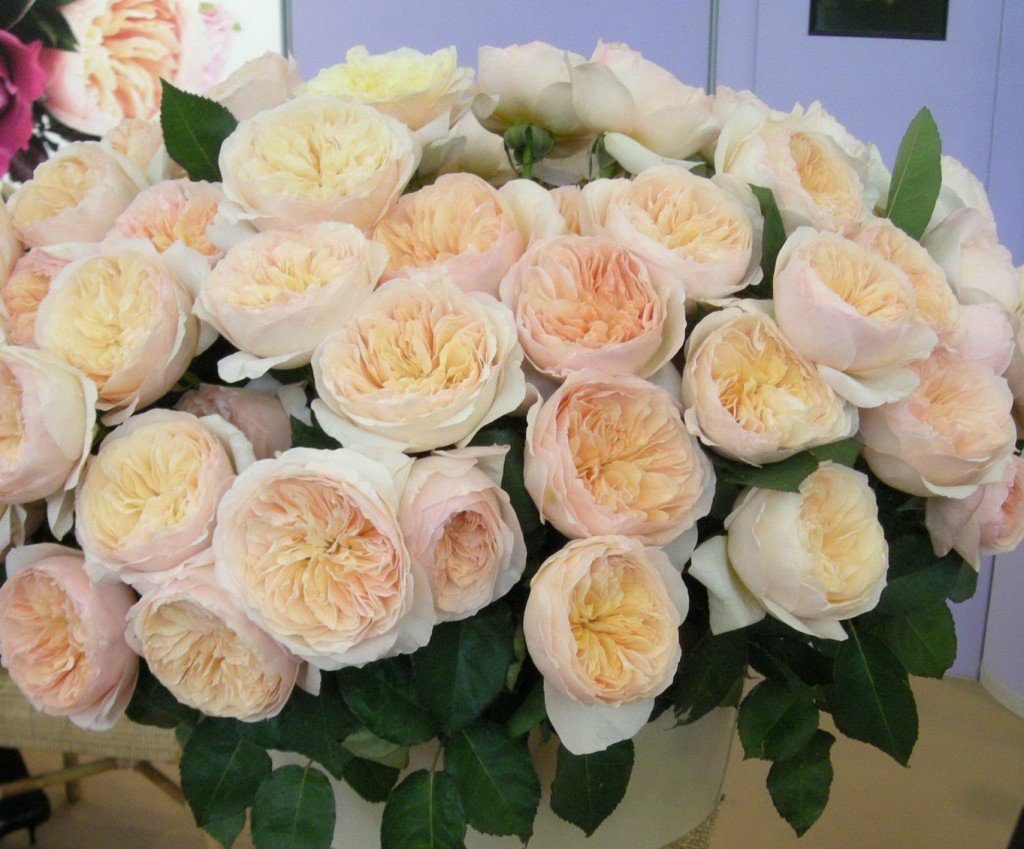 It should be noted that in a short time, quite a few varieties of these beautiful flowers were bred, of which the following are considered especially popular:
It should be noted that in a short time, quite a few varieties of these beautiful flowers were bred, of which the following are considered especially popular:
- Constance Spray is the very first peony hybrid bred by Austin, which has not lost its popularity over the years. The rose of this variety is widely used in landscape design, as it curls beautifully over the support and blooms very luxuriantly. The bush is vigorous, the lashes reach 4 m, the buds are large, half-open, cupped, delicate pink color.
- Pat Austin is a delightful bright honey orange or coppery yellow rose. The flowers are large, semi-double, with a delicate pink scent. The variety is distinguished by early and long flowering (from early June to late summer), as well as high resistance to cold and shade.
- William Shakespeare 2000 is an unpretentious shade-tolerant variety with bright red or crimson buds. The rose bush is rather high (1.8 m), the flowers are large, double, located singly on the shoot, the aroma is intense pink.
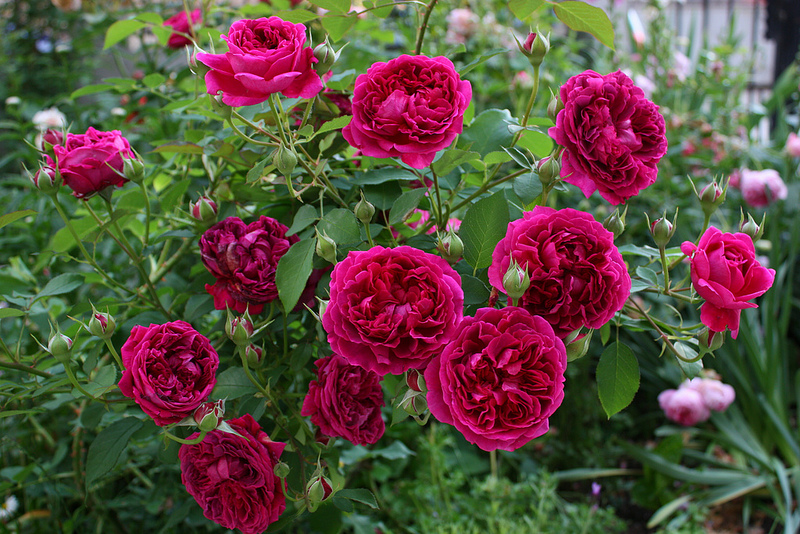
- Misty Bubbles is a mysterious strain with delicate mauve flowers. The bush is low (up to 60 cm), compact. The flowers are small (3-4 cm), terry, 5-8 flowers are located on the stem, exude a delicate spicy aroma. The winter hardiness of the variety is average, but its resistance to disease and drought is high.
- Golden Celebration is the most popular and most commonly planted variety. Sprawling bush, rather tall (1.5-1.8 cm), densely leafy. The flowers are double, yellow-orange, the petals are large, when fully opened they turn outward.
- Benjamin Britten is a disease and cold resistant variety with very large (up to 12 cm in diameter) flowers. Bushes of medium height (1.5 m, rarely up to 2 m), beautifully leafy. The buds are densely double, cup-shaped, of a bright raspberry or red color, with a delicate fruity aroma.
- Othello is another hybrid with large red buds gathered in inflorescences. A feature of the variety is the ability of the buds to change color - when blooming, the rose has a rich crimson color, which becomes dark crimson in cold weather, and after time the flower acquires a lilac hue. Sprawling bush, prickly shoots, blooms again in warm climates.
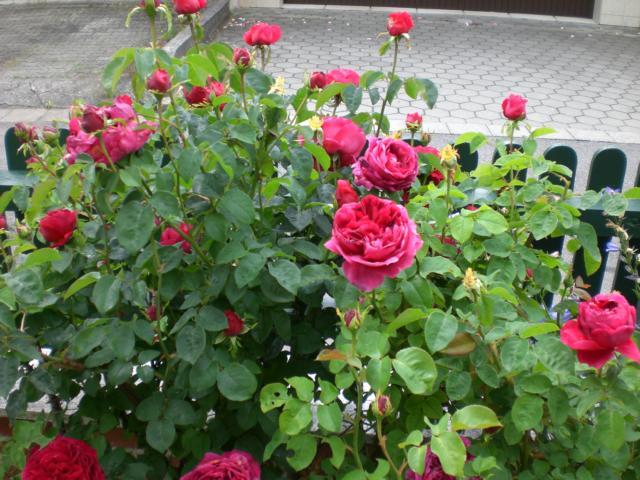
- Lady Charlotte is one of Austin's last masterpieces, named after his granddaughter. This is a hybrid of an old English variety, from which the flower got its best qualities: a soft yellow color and a delicate aroma characteristic of tea roses. The variety is famous for its large, densely doubled buds and long undulating flowering.
Video "Leaving"
From the video you will learn about caring for these magnificent bushes.
Features of planting and growing
There is nothing difficult about growing these amazing roses. The most important thing is the correct fit. If the bush is planted in the right place, in good soil, then it will grow rapidly and delight with abundant flowering with very minimal maintenance. Planting roses should be done in prepared and well-fertilized soil. 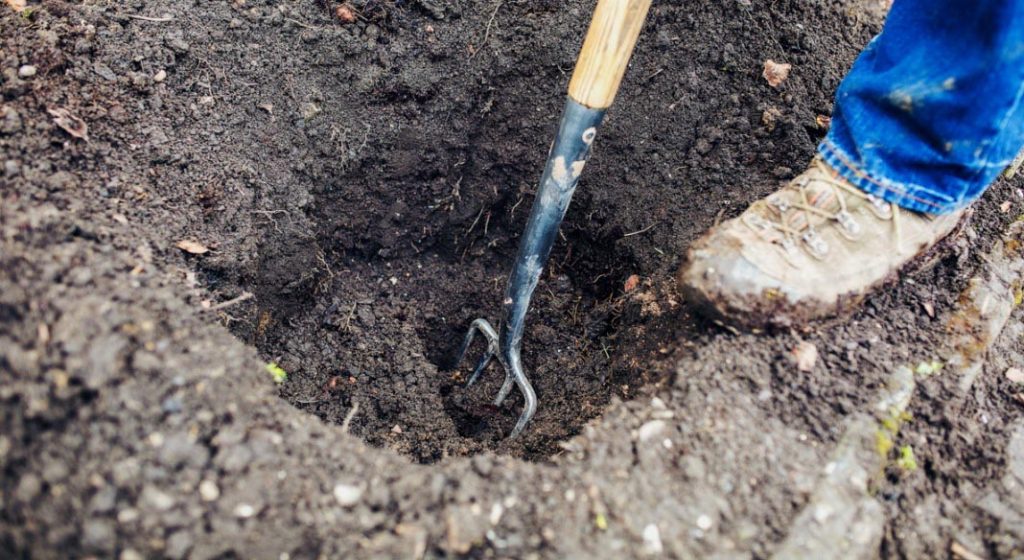 Horse manure is considered the best fertilizer for this type of flowers, since it saturates the soil with nitrogen well. It is laid in a thin layer (about 2 cm) at the bottom of the planting pit. In the absence of horse manure, compost can be used.
Horse manure is considered the best fertilizer for this type of flowers, since it saturates the soil with nitrogen well. It is laid in a thin layer (about 2 cm) at the bottom of the planting pit. In the absence of horse manure, compost can be used.
Planting holes are dug wide (up to 1 m) and deep (at least 50 cm), since an adult bush has a voluminous root system.
Depending on the variety, rose seedlings are planted at a distance of 0.5-1 m in the form of a triangle. This scheme allows you to achieve the effect of beautiful decorative thickets, completely covered with inflorescences.
Before planting, it is recommended to place the seedlings in a growth stimulator for several hours - this procedure accelerates the rooting of the plant in a new place. When planting, it is necessary to ensure that the roots of the seedling are freely located in the planting pit. As for the planting depth, it is considered ideal to deepen the roots into the ground by 10 cm - at this depth they will not freeze.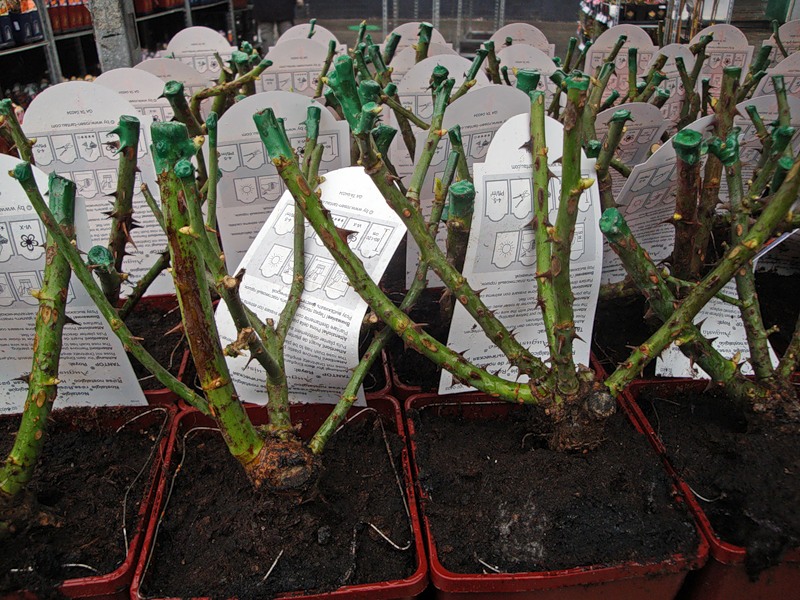
Peony roses, like any others, prefer sunny, windless areas, but heat and sun are not vital for them. They bloom quite successfully in partial shade, in addition, in the Austin collection there are several shade-tolerant varieties that can grow even in difficult weather and climatic conditions. According to the breeder, peony roses only need 3 hours of sunshine daily for full flowering.
How to care
Competent care is the key to a healthy look of the bush and its lush flowering. Despite the fact that peony roses are not very demanding to care for, basic activities such as watering, feeding and pruning are required for them. Watering should be done as the soil dries up in the evening at the rate of 12-15 l / bush. Water for irrigation should be settled and not cold.
To make the bush look decorative, you need to periodically apply fertilizer under it. The first time the plants are fed at the end of spring with special complex mixtures for roses (sold in flower shops). The next time fertilizers are applied during the period of bud formation, phosphorus and calcium dressings are applied.
If necessary, and also in case of repeated flowering, roses can be fed with liquid mullein. In August, top dressing is no longer recommended. When applying fertilizers, it is very important not to exceed the dosage of preparations, since oversaturation with nutrients leads to yellowing of the leaves.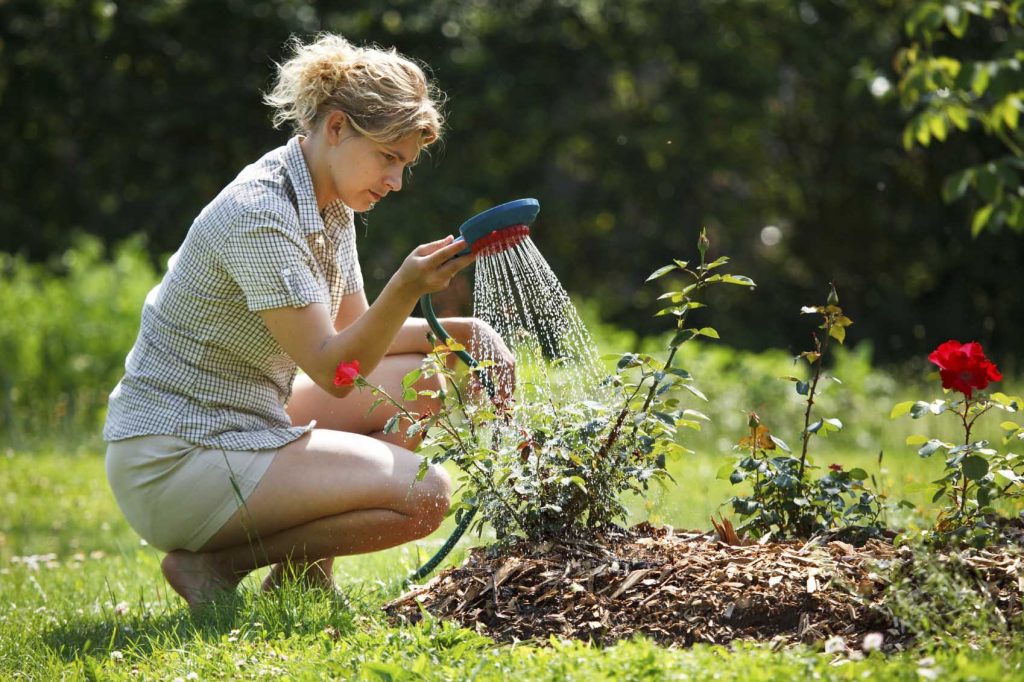
Pruning peony roses is not only a hygienic procedure, but also a way to give the bush a beautiful decorative shape.
Roses should be pruned in the spring. During pruning, all damaged, diseased and old branches are removed, and the tops of the shoots are trimmed by about a third. Peony varieties tolerate decorative haircut well, therefore, if desired, the bush can be given an unusual decorative shape.
If your roses do not grow in southern latitudes, then they need to be covered for the winter. Around the middle of autumn, you should start preparing the bushes for shelter: remove all unripe shoots (they create an extra load on the bush) and remove all the leaves. With the onset of the first night frost, the lashes must be carefully bent to the ground, fixed, and then covered with a thick layer of organic mulch (sawdust, straw, spruce branches). It is not recommended to use foil or other airtight materials for roses, as plants from lack of air can rot and die.
Video "Diseases of roses and pests"
From the video you will learn about the diseases of bushes and pests.



